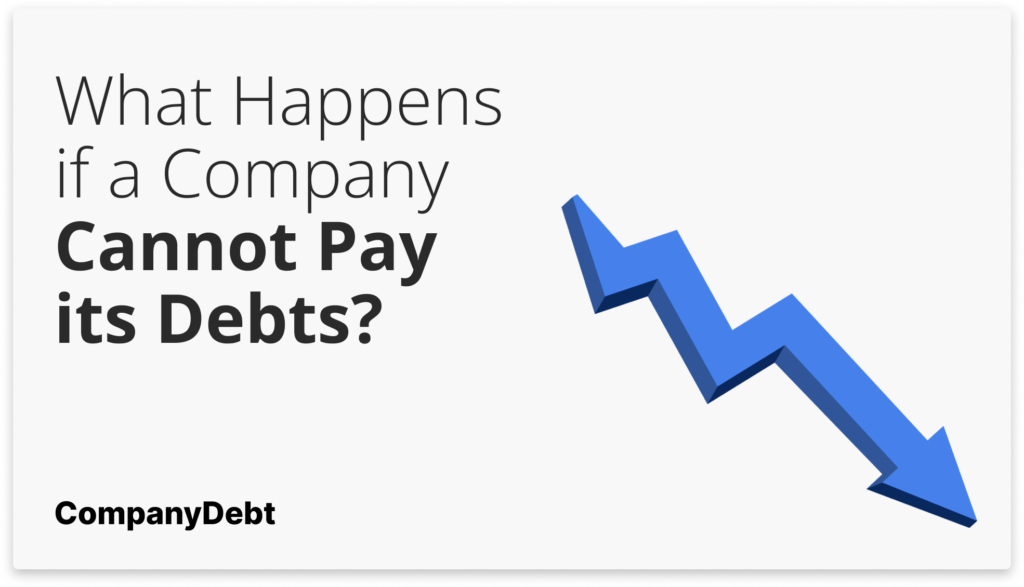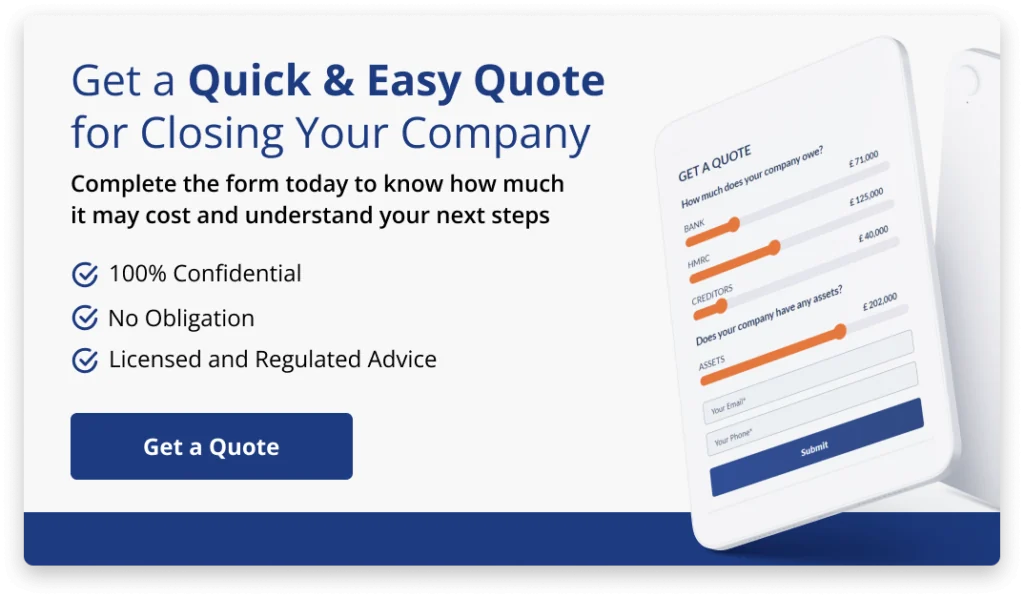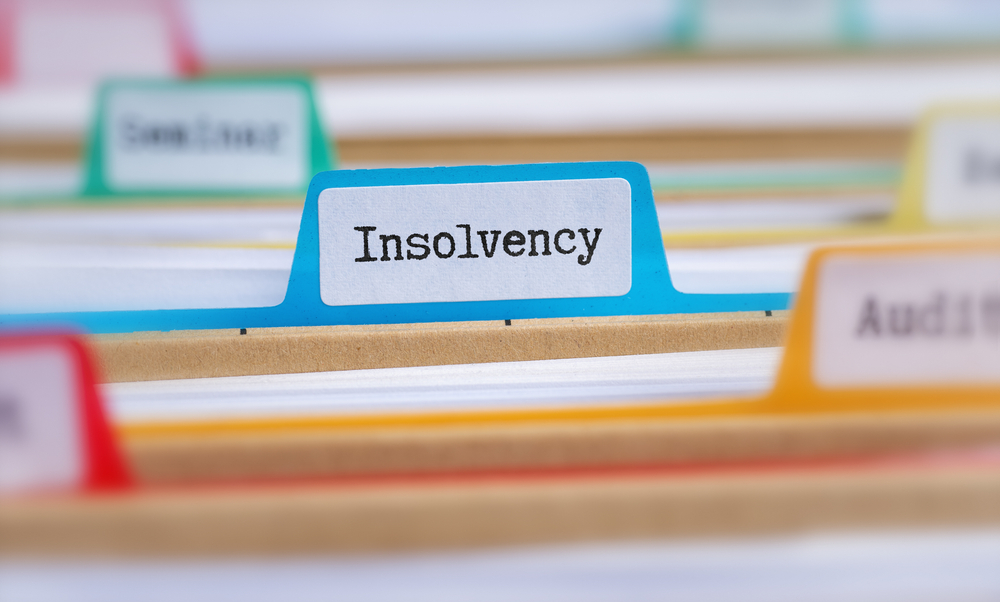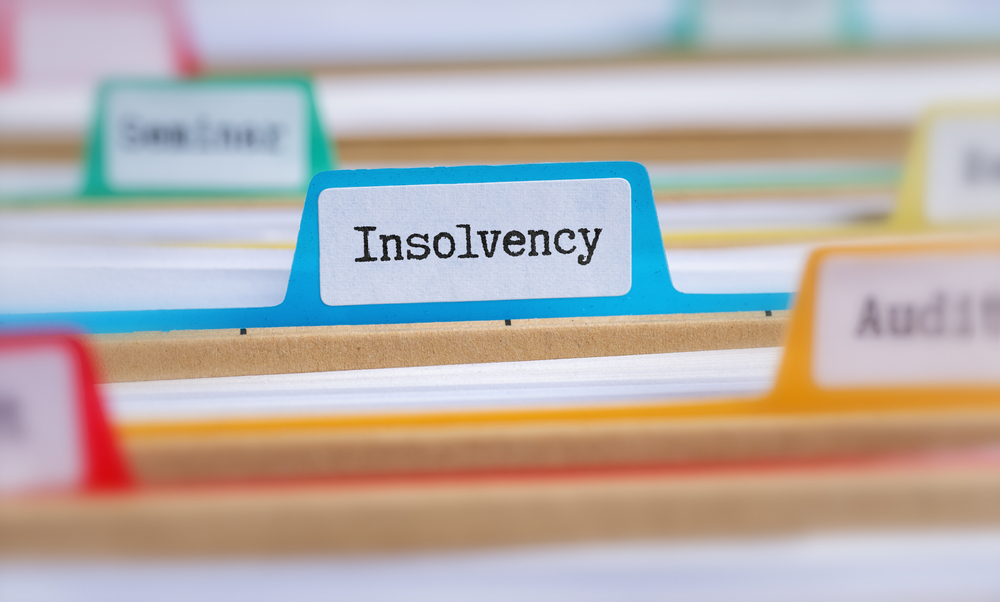
What Happens if a Company Cannot Pay its Debts?
When your company faces financial difficulties, it’s crucial to understand the potential consequences and available options.
This guide will explain what happens when a business can’t meet its financial obligations and the steps you can take to address the situation.
Options for Businesses Struggling to Pay Creditors
If you’re finding it challenging to pay your creditors, it’s essential to seek advice from a licensed insolvency practitioner such as ourselves as soon as possible. We often find that directors are unaware of their legal obligations when a company becomes insolvent.
When your company is insolvent, you have a legal duty to prioritise your creditors’ interests[1]Trusted Source – GOV.UK – Director information hub: Director duties upon insolvency. This means avoiding any actions that could worsen their position.
Failing to do so could result in serious consequences, including personal liability for some of the company’s losses if you’re found to have acted irresponsibly.
Contacting an insolvency practitioner will give you a clearer sense of the options available to you. They may suggest one of the following solutions for companies unable to pay their debts:
Company Voluntary Arrangement (CVA)
A Company Voluntary Arrangement (CVA) can be an effective solution if your business is viable but struggling with debt[2]Trusted Source – GOV.UK – Company Voluntary Arrangements. This formal agreement between your company and its creditors allows you to repay debts over an extended period, typically three to five years.
Here’s how a CVA works:
- We’ll help you propose a repayment plan to your creditors.
- If 75% of creditors (by debt value) agree, the CVA becomes binding on all unsecured creditors.
- You’ll make regular payments to a supervisor, who distributes funds to creditors.
- Your company continues to trade, often with improved cash flow due to reduced debt payments.
A CVA can offer several benefits:
- Protection from creditor pressure and legal action
- Potential to write off a portion of unsecured debt
- Opportunity to restructure your business while trading
- Avoidance of formal insolvency procedures like liquidation
However, it’s important to note that CVAs aren’t suitable for every situation. Your company must be viable and able to meet the agreed payments. Additionally, secured creditors aren’t bound by the CVA unless they agree to it.
If you’re considering a CVA, we’ll assess your company’s situation thoroughly to determine if it’s the right option. We’ll also guide you through the proposal process and help you communicate effectively with your creditors.
Administration
When your company is facing significant financial pressure, entering administration can provide a valuable breathing space[3]Trusted Source – GOV.UK – Put your company into administration. This formal insolvency procedure offers protection from creditor action while an insolvency practitioner (the administrator) attempts to rescue the business or achieve a better result for creditors than immediate liquidation.
Administration creates a moratorium, preventing legal action against your company without court permission. The administrator takes control of your company’s affairs, aiming to achieve one of three statutory objectives:
- Rescuing the company as a going concern
- Achieving a better result for creditors than immediate liquidation
- Realising property to make a distribution to secured or preferential creditors
Typically, administration lasts for one year but can be extended with creditor or court approval. It offers several advantages, including immediate relief from creditor pressure, the opportunity to restructure the business, the potential to preserve jobs and business value, and the possibility of selling the business as a going concern.
However, entering administration is a serious step with significant implications. It becomes public knowledge, which may affect relationships with suppliers and customers. Additionally, if rescue isn’t possible, administration may lead to liquidation.
We’ll help you determine if administration is appropriate for your situation, guiding you through the process and working to achieve the best possible outcome for your company and its stakeholders. Our expertise ensures you’ll make informed decisions about your company’s future.
Pre-pack Administration
Pre-pack administration is a specialised form of insolvency procedure that can be particularly useful if your business has value but is struggling with unsustainable debt. In a pre-pack, the sale of your company’s business and assets is arranged before an administrator is appointed and then executed immediately after their appointment.
This process typically involves:
- A licensed insolvency practitioner assessing your company’s situation
- Marketing the business discreetly to potential buyers
- Negotiating a sale, often to the existing management (though this isn’t always the case)
- Appointing an administrator who then completes the pre-arranged sale
Pre-pack administration can offer several benefits:
- It allows for a quick, smooth transfer of the business, preserving its value
- Jobs are often saved as the business continues trading under new ownership
- The negative publicity associated with a prolonged administration is minimised
- It can result in a better return for creditors than other insolvency procedures
However, pre-packs are not without controversy. Creditors may feel they’ve been denied the opportunity to influence the sale process. To address this, we always ensure full compliance with the Pre-Pack Pool and SIP 16 regulations, which require detailed disclosure of the sale process and rationale.
If you’re considering a pre-pack, we’ll guide you through the complex legal and ethical considerations, ensuring the best possible outcome for all stakeholders.
Creditors’ Voluntary Liquidation (CVL)
When your company is insolvent, and there’s no viable way to rescue the business, a Creditors’ Voluntary Liquidation (CVL) might be the most appropriate course of action. This process allows you to voluntarily wind up your company’s affairs, ensuring a fair distribution of assets to creditors.
A CVL involves the following key steps:
- Directors recognise the company is insolvent and decide to liquidate
- Shareholders pass a resolution to wind up the company
- A licensed insolvency practitioner is appointed as liquidator
- The liquidator realises the company’s assets and distributes proceeds to creditors
- Once complete, the company is dissolved and ceases to exist
Opting for a CVL can offer several advantages:
- It demonstrates responsible behaviour to creditors
- Directors fulfil their legal duties to creditors when insolvent
- It stops creditor pressure and prevents further debts accumulating
- The process is orderly and controlled, unlike a compulsory liquidation
While a CVL means the end of your company, it can provide a clean break, allowing you to move forward. It’s often preferable to waiting for creditors to force the company into compulsory liquidation, which can have more severe consequences for directors.
We understand that deciding to liquidate your company is never easy. If you’re considering a CVL, we’ll provide expert guidance, ensuring you understand the process and its implications fully. Our aim is to make this difficult time as smooth and stress-free as possible for you.

What Happens if a Limited Company Can’t Afford to Pay its Debts?
When your limited company is unable to pay its debts as they fall due, it’s crucial to understand the potential consequences and the steps creditors, including HMRC, may take to recover the money owed. Being aware of these actions can help you make informed decisions about your company’s future.
If your company is struggling with debt, creditors may pursue several courses of action:
- Statutory Demand – If your company owes a creditor £750 or more, they can serve a statutory demand for payment. This is a formal, written demand that requires your company to pay the debt within 21 days. If the debt is not paid or disputed within this timeframe, it can be used as evidence that your company is insolvent, and the creditor may proceed with further action.
- County Court Judgment (CCJ) Creditors may also seek a County Court Judgment (CCJ) against your company. If granted, a CCJ orders your company to repay the debt according to the terms set by the court. Failure to comply with a CCJ can result in enforcement action, such as bailiffs seizing company assets.
- Bailiff Action – If your company fails to pay a debt after a CCJ or statutory demand, creditors may instruct bailiffs to seize company assets to recover the money owed. Bailiffs have the legal authority to enter your company’s premises and take possession of goods, equipment, or vehicles to sell at auction to repay the debt.
- Winding-up Petition – For debts exceeding £750, a creditor may petition the court to wind up your company on the grounds of insolvency. If the court grants the petition, your company will be forced into compulsory liquidation. The Official Receiver or an appointed insolvency practitioner will liquidate the company’s assets to repay creditors as much as possible before dissolving the company.

How Long can a Company Continue to Operate if it can’t pay its Debts?
The length of time a company can continue to operate when it can’t pay its debts depends on various factors, including the severity of its financial situation, the actions of its creditors, and the decisions made by its directors.
However, it’s important to note that allowing a company to continue trading while insolvent is a serious matter that can have legal consequences for directors.
In the UK, there are two main tests for corporate insolvency:
- The Cash Flow Test: A company is insolvent if it cannot pay its debts as they fall due.
- The Balance Sheet Test: A company is insolvent if its liabilities exceed its assets.
If a company fails either of these tests, its directors have a legal duty to prioritise creditors’ interests and take action to minimise further losses.
You can use our free insolvency test tool here to clarify your position.
How Can an Insolvency Practitioner Ease Creditor Pressure?
When your company is struggling with debt, the mounting pressure from creditors can be overwhelming. This is where an insolvency practitioner can provide invaluable assistance. We’re experienced in dealing with creditors and can help alleviate the stress you’re facing.
Here’s how we can ease creditor pressure:
- Acting as a buffer: We’ll communicate with creditors on your behalf, reducing your direct exposure to stressful interactions.
- Negotiating with creditors: We can often secure more favourable terms or payment plans, giving your business breathing space.
- Implementing formal procedures: If necessary, we can initiate processes like administration or CVAs, which provide legal protection from creditor actions.
- Providing expert advice: We’ll help you understand your options and rights, ensuring you make informed decisions.
By engaging an insolvency practitioner, you’re demonstrating to creditors that you’re taking your financial situation seriously. This often leads to a more cooperative approach from creditors, as they recognise you’re seeking a professional solution.
Remember, the earlier you involve us, the more options we’ll have to help your business. Don’t wait until creditor pressure becomes unbearable. Contact us today, and we’ll work with you to develop a strategy for managing your creditors and potentially saving your business.
The primary sources for this article are listed below, including the relevant laws and Acts which provide their legal basis.
You can learn more about our standards for producing accurate, unbiased content in our editorial policy here.
- Trusted Source – GOV.UK – Director information hub: Director duties upon insolvency
- Trusted Source – GOV.UK – Company Voluntary Arrangements
- Trusted Source – GOV.UK – Put your company into administration








